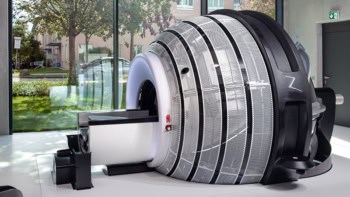
Cryoablation — the destruction of cancer cells through freezing — may offer a promising alternative for treating low-risk breast cancers, according to interim results from the Ice 3 Trial presented today at the RSNA annual meeting. Ice 3 is a large scale multi-centre trial designed to assess image-guided cryoablation as a primary treatment for breast cancer, without surgical lumpectomy. Over the first four years of the study, there has been just one cancer recurrence out of 180 patients.
“If the positive preliminary findings are maintained as the patients enrolled in the study continue to be monitored, that will serve as a strong indication of the promise of cryotherapy as an alternative treatment for a specific group of breast cancer patients,” says lead author Kenneth Tomkovich from Princeton Radiology and CentraState Medical Center.
Cryoablation involves inserting a probe into the tumour via a tiny incision in the skin. The probe is guided by high-definition ultrasound in conjunction with mammography images. Once in place, liquid nitrogen is introduced into the probe causing the formation of an ice ball around the tumour, which destroys the cancer cells.

The Ice 3 Trial started in 2014, when Tomkovich and colleagues at 18 centres across the US began performing cryoablation on women aged 60 and over with biopsy-proven, low-risk breast cancer. The procedure, which includes two eight-minute freeze cycles, separated by a thaw cycle, takes less than an hour. Patients can return to their normal activities shortly thereafter. After treatment, patients are followed for recurrence with mammography at six and 12 months and then annually for five years.
The researchers now have three-year follow-up data on about 20 patients and two-year follow-up data on more than 75. The preliminary results are highly promising. The procedure was successfully completed in all patients, with no serious adverse events reported. Only one patient experienced a recurrence, giving the procedure a 99.4% success rate so far.
“Lumpectomy is 90 to 95% effective at removing cancer,” says Tomkovich. “We were going for something close to that, but our preliminary results have been even better. We’re getting the same results at 18 centres around the country.”
Cryoablation also has advantages over heat-based ablation techniques. Tissue retains its appearance when frozen, while heating tends to deform it, making imaging less reliable. In addition, there is preliminary evidence from studies on mice that cryoablation can stimulate an immune response against cancer cells in the body.
The final results of the study will be published when five-year follow-up data are available for all the women who were treated. “If it’s proven that cryoablation works, then some women might be more inclined to opt for it over surgery,” says Tomkovich.



